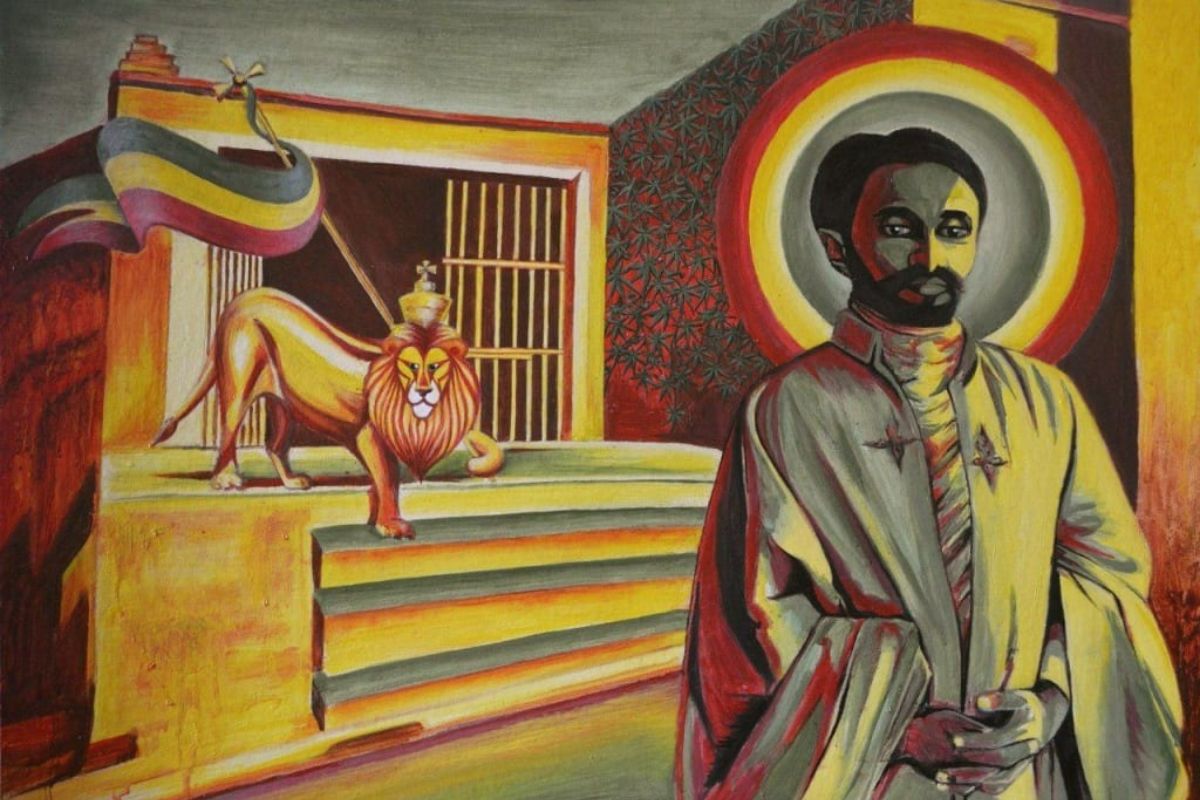
What is Jah? Jah is a term deeply rooted in the Rastafari movement, representing a profound spiritual and cultural concept. Originating from the Hebrew name for God, Jehovah, Jah is central to Rastafari beliefs. This movement, which began in Jamaica in the 1930s, views Jah as an immanent presence within each individual. Jah is not just a distant deity but a guiding force in daily life. The divinity of Haile Selassie I, the former Emperor of Ethiopia, is also a key aspect, with many Rastas seeing him as an incarnation of Jah. This article explores 35 fascinating facts about Jah, shedding light on its significance in Rastafari and beyond.
Understanding Jah: The Core of Rastafari
Jah is a term that holds deep spiritual and cultural significance, especially within the Rastafari movement. Let's explore what makes Jah such a central figure.
-
Definition of Jah: Jah is a shortened form of Jehovah, derived from the Hebrew name for God in the Old Testament. In Rastafari, Jah is the central deity, a monotheistic God who is believed to reside within each individual.
-
Rastafari Movement: The Rastafari movement emerged in Jamaica during the 1930s, primarily among African diaspora communities. It is characterized by its Afrocentric focus and a strong belief in the divinity of Haile Selassie I, the former Emperor of Ethiopia.
-
Haile Selassie I: Haile Selassie I was a pivotal figure in Rastafari. Many Rastas consider him the Second Coming of Jesus and an incarnation of Jah. His reign from 1930 to 1974 was seen as a divine appointment, aligning with biblical prophecies.
Monotheism and Immanence in Rastafari
Rastafari beliefs are unique in their interpretation of monotheism and the presence of Jah within every individual.
-
Monotheism in Rastafari: Rastas are monotheists, worshiping a singular God referred to as Jah. This belief is deeply rooted in the Old Testament, where Jehovah is the primary deity.
-
Immanence of Jah: In Rastafari, Jah is not just a distant deity but an immanent presence within each individual. This belief is reflected in the aphorism "God is man and man is God," emphasizing the interconnectedness of humanity and divinity.
Jah in Rastafari Music and Culture
Music and cultural practices play a significant role in expressing and spreading the beliefs about Jah.
-
Jah in Rastafari Music: Music plays a crucial role in Rastafari culture, with many songs referencing Jah. Artists like Jegz, Mickey Dangerous, Jah9, and Jah Defender often use lyrics that highlight Jah's role as creator, protector, and guide.
-
Pantheistic Interpretations: Some Rastas interpret Jah as a pantheistic deity, suggesting that Jah resides within all beings and moments. This perspective is reflected in statements like "We are all connected in Jah, kind of like the Force in Star Wars, except real, not a movie".
-
Rejection of Sky God: Rastas often reject the concept of a sky god, instead emphasizing that redemption lies within human character. This view is encapsulated by Mutabaruka's statement, "The Rastas don’t believe in the sky god. Their redemption lies within the human character… There is no God in the sky. Man is God…".
Afrocentric Focus and Practices
Rastafari's Afrocentric focus and unique practices set it apart from other spiritual movements.
-
Afrocentric Focus: Rastafari is deeply Afrocentric, focusing on the African diaspora and its struggles within Western society, referred to as "Babylon." Many Rastas advocate for the resettlement of the diaspora in Africa, which they consider the Promised Land or "Zion".
-
Livity and Groundations: Rastas refer to their practices as "livity," which includes communal meetings known as "groundations." These gatherings typically involve music, chanting, discussions, and the smoking of cannabis, which is regarded as a sacrament with beneficial properties.
-
Dietary Requirements: Rastas adhere to ital dietary requirements, which emphasize natural and organic foods. This lifestyle choice is part of living "naturally" and avoiding processed or synthetic substances.
-
Dreadlocks: Wearing dreadlocks is a significant practice among Rastas, symbolizing spiritual growth and a connection to nature. Dreadlocks are seen as a way to maintain natural hair without external interference.
-
Patriarchal Gender Roles: Rastas often follow patriarchal gender roles, with men typically holding positions of authority within the community. This structure is part of maintaining traditional values and social order.
-
Cannabis as a Sacrament: Cannabis is a central element in Rastafari rituals, believed to enhance spiritual experiences and provide medicinal benefits. The use of cannabis is deeply ingrained in Rastafari culture and is often referred to as "ganja".
Influence of Reggae and Notable Figures
Reggae music and influential figures have played a crucial role in spreading Rastafari beliefs about Jah.
-
Reggae Music: Reggae music, originating from Jamaica, is closely tied to Rastafari. Artists like Bob Marley and Peter Tosh have been influential in spreading Rastafari ideals through their music. Reggae's rhythmic beats and lyrics often reflect themes of social justice and spiritual awakening.
-
Jah Prayzah: Jah Prayzah, a Zimbabwean musician, uses the name Jah as part of his stage name. His music blends traditional Zimbabwean sounds with Afrobeats, reflecting his commitment to preserving cultural heritage while innovating in the music industry.
-
Mukarram Jah: Mukarram Jah, the last Nizam of Hyderabad, is not directly related to the concept of Jah in Rastafari. However, his title and historical significance highlight the diverse uses of the name Jah across different cultures and contexts.
Biblical References and Theological Views
The term "Jah" has deep biblical roots and unique theological interpretations within Rastafari.
-
Biblical References: The term "Jah" is derived from the Hebrew name for God in the Old Testament. In Psalm 68:4, it is written, "Sing unto God, ye kingdoms of the earth: O sing unto the Lord; / Sing unto the Lord a new song: for he hath done marvelous things: his right hand, and his holy arm, hath gotten him the victory." This verse is often referenced in Rastafari literature to emphasize Jah's power and divinity.
-
Rastafari and Christianity: Rastas have a complex relationship with Christianity. While they recognize Jesus as an important figure, they reject the traditional Christian view of him as a white European. Many Rastas believe that Jesus was a black African and that the white Jesus is a false god.
-
Jesus as a Black African: The idea that Jesus was a black African is deeply rooted in Rastafari theology. This perspective challenges the dominant Western narrative of Jesus as a white man, instead aligning with the historical and cultural context of ancient Africa.
-
Opposition to Western Christianity: Rastas often view Western Christianity with suspicion, seeing it as a tool of oppression used by white Europeans to maintain control over the African diaspora. This view is encapsulated by the claim that the Pope is Satan or the Antichrist, and that Christian preachers are deceivers.
-
Mental Enslavement: Rastas believe that Western Christianity has perpetrated "mental enslavement" by imposing false narratives and beliefs on the African diaspora. This perspective emphasizes the need for spiritual liberation and the reclaiming of authentic African identities.
Social Justice and Activism
Rastafari is not just a spiritual movement but also a social movement advocating for justice and equality.
-
Rastafari and Social Justice: Rastafari is not just a spiritual movement but also a social movement advocating for justice and equality. Rastas often engage in activism and community work, focusing on issues like racism, inequality, and environmental degradation.
-
Haile Selassie’s Legacy: Haile Selassie I’s legacy continues to inspire Rastas worldwide. His reign was marked by efforts to modernize Ethiopia and promote African unity, which aligns with Rastafari’s Afrocentric focus on unity and empowerment.
-
Rastafari Festivals: Rastafari celebrates several festivals, including the Ethiopian New Year (Enkutatesh) and the coronation of Haile Selassie I. These festivals are significant in Rastafari culture, providing opportunities for communal celebration and spiritual reflection.
Notable Rastafarians and Global Impact
Prominent figures and the global influence of Rastafari have helped spread its message far and wide.
-
Notable Rastafarians: Notable figures in the Rastafari movement include Haile Selassie I, Bob Marley, Peter Tosh, and Mutabaruka. These individuals have played crucial roles in shaping Rastafari ideology and spreading its message globally.
-
Rastafari in Jamaica: Jamaica is the birthplace of Rastafari, with the movement emerging in the 1930s. The island’s cultural and historical context, including the influence of African diasporic traditions, contributed significantly to the development of Rastafari.
-
Rastafari and Music: Music is an integral part of Rastafari culture, with genres like reggae and dub reflecting its spiritual and social themes. Artists like Bob Marley and Peter Tosh have been instrumental in popularizing Rastafari ideals through their music.
-
Rastafari and Cannabis: Cannabis, or ganja, plays a significant role in Rastafari rituals. The use of cannabis is believed to enhance spiritual experiences and provide medicinal benefits, aligning with the movement’s emphasis on natural living.
-
Rastafari and Diet: Rastas adhere to ital dietary requirements, which emphasize natural and organic foods. This lifestyle choice is part of living "naturally" and avoiding processed or synthetic substances.
-
Rastafari and Hair: Wearing dreadlocks is a significant practice among Rastas, symbolizing spiritual growth and a connection to nature. Dreadlocks are seen as a way to maintain natural hair without external interference.
-
Rastafari and Gender Roles: Rastas often follow patriarchal gender roles, with men typically holding positions of authority within the community. This structure is part of maintaining traditional values and social order.
-
Rastafari and Community: Rastafari places a strong emphasis on community and communal living. Groundations, or communal meetings, are essential in fostering a sense of unity and shared purpose among Rastas.
-
Rastafari and Activism: Rastafari is not just a spiritual movement but also a social movement advocating for justice and equality. Rastas often engage in activism and community work, focusing on issues like racism, inequality, and environmental degradation.
-
Global Impact of Rastafari: Rastafari has had a significant global impact, influencing music, culture, and spirituality. The movement continues to inspire new generations, advocating for unity, justice, and spiritual liberation.
Jah: A Profound Symbol in Rastafari
Jah stands as a powerful symbol in Rastafari culture, representing a unique blend of spirituality, social justice, and Afrocentric values. Rooted in the Old Testament, Jah is more than just a deity; it's a presence felt within each individual. The Rastafari movement, with its emphasis on Haile Selassie I, reggae music, and communal living, has made a significant impact globally. From the ital diet to the wearing of dreadlocks, every aspect of Rastafari life reflects a deep connection to nature and spirituality. Jah's influence extends beyond religion, touching music, activism, and cultural identity. Understanding Jah offers a glimpse into a rich, vibrant culture that continues to inspire and challenge conventional beliefs. Whether through music, community, or personal faith, Jah remains a central figure in the ongoing journey toward spiritual and social liberation.
Was this page helpful?
Our commitment to delivering trustworthy and engaging content is at the heart of what we do. Each fact on our site is contributed by real users like you, bringing a wealth of diverse insights and information. To ensure the highest standards of accuracy and reliability, our dedicated editors meticulously review each submission. This process guarantees that the facts we share are not only fascinating but also credible. Trust in our commitment to quality and authenticity as you explore and learn with us.


